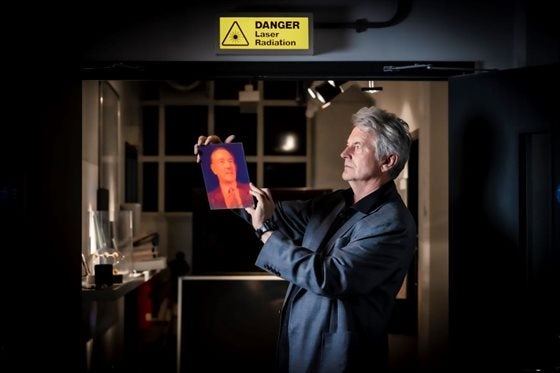
The new counterfeiting hologram designed for the apparel industry is described as being similar to the holograms printed on banknotes to prevent fraud.
The hologram, which was created by Professor Martin Richardson, Professor of Holography at De Montfort University Leicester (DMU), are embedded onto thread fibres. The hologram will then appear when the fabric is placed under a microscope.
Professor Richardson explained: “The holographic technology being developed at De Montfort University is targeted for brand protection, being able to identify a genuine article from fake. Counterfeits now proliferate consumer goods and its vital to protect both public, and industry, if we are to continue developing a strong and safe economy.”
The global counterfeiting industry is expected to hit the US$4.2 trillion mark by 2022, according to DMU. Last year, the fashion industry lost more than $50bn due to the sale of fake products including those claiming to be from leading clothing and accessory brands, it says.
It is hoped this innovation will lead to new approaches being taken to protect against textiles such as the clothing and handbags industries being illegally produced.
DMU explains textile piracy poses a great threat to the global apparel industry. “Traffic in pirate textiles is growing worldwide – it is also rapidly spreading into new technologies and formats, including safety critical items,” it says.

US Tariffs are shifting - will you react or anticipate?
Don’t let policy changes catch you off guard. Stay proactive with real-time data and expert analysis.
By GlobalDataProfessor Richardson leads the hologram technical facility known as the HOLO-Lab at De Montfort University Leicester. He has worked in the holographic industry for a number of years and earlier this year produced what is described as one of the first true-colour holograms.
Professor Richardson’s hologram-marked threads will be displayed as part of the Dubai Expo trade show.



